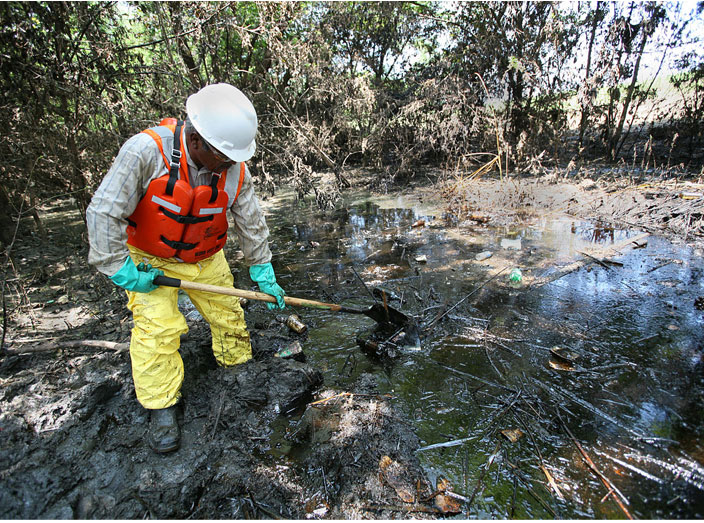What is Bioremediation?
Those Wonderful Microbes!
The basic premise of bioremediation is to enhance microbes capable of degrading the target compounds through physical means (mixing and aeration) and chemical means (addition of mineral nutrients). The microbes to be used in bioremediation process may be indigenous (already present) or external (proven degraders of other origin)..
The process of microbial growth and bioremediation can be thought of in as simple or complex a manner as the individual chooses. For the practitioner seeking simplicity, bioremediation is simply gardening. By managing the remediation project as one would prepare, fertilize and seed a garden the mystery of microbiology is removed to a common sense, practical level.
Microorganisms have long been a major player in environmental remediation. Long before Alexander Fleming discovered the usefulness of a common fungus to provide the lifesaving antibiotic penicillin, microorganisms of all sorts were diligently doing their jobs in waste reduction and nutrient recycling.
Throughout the evolution of microbiology, we have determined the advantages and disadvantages of microbes. The disadvantages are obvious. Who hasn’t suffered from a bacterial infection or the common cold at some time in their life?
However, we tend to forget the abundant advantages of microbes. Without microbes, imagine our environment. The grass clippings from last summer would hang around indefinitely. Our soils would no longer have the self-sufficiency to produce on their own because they would lack nutrients released from decaying organic matter. Frankly, microbes offer us a great deal of essential services!
Bioremediation Sites
The type of bioremediation used depends upon the specific site you are treating and site conditions; things like preexisting microbial population, type, quantity and toxicity of containment chemicals present. Site treatment can be in situ, treated at the contamination site, or ex situ, treated at an off-site location. In situ is typically the preferred method as it is less expensive than excavating or pumping contaminated soil or groundwater.
At Advanced Microbial Services, we prefer the practice of site inoculation. Under precise control, inoculation can be a cost effective, more reliable, and quicker means of contaminant removal.
Why? As mentioned, inoculation gives us the capability of selecting microbes that have known degrading capabilities for a specific contaminant. Furthermore, by inoculating with a diverse culture of microbes, we can ensure that all members of the degrading team are present to completely remove the contaminant.
Inoculation provides a large population immediately. Therefore, significant remediation can be seen in a quicker time frame. All of these provide greater control over the system and allow for a more aggressive approach towards cleanup.


